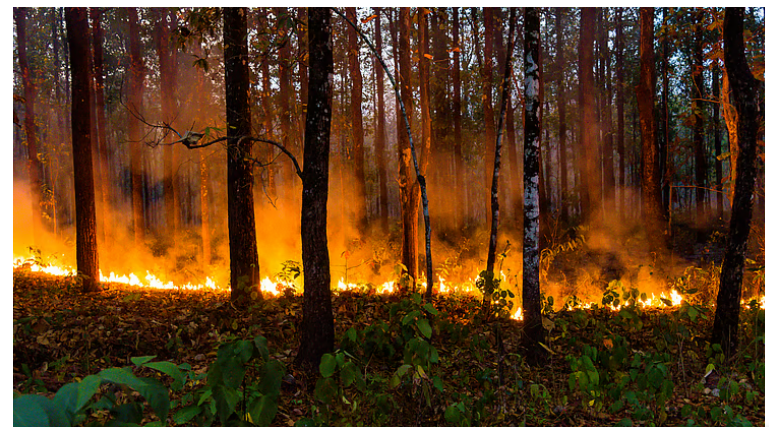Global Tree Cover Loss Due to Fires Surged by 370% Compared to 2023

IN NEWS:
Global Tree Cover Loss Due to Fires Surged by 370% Compared to 2023
Analysis
- According to The 2025 State of the Climate Report: A Planet on the Brink, global tree cover loss reached 29.6 million hectares (Mha) in 2024 — the second highest on record, marking a 4.7% increase over 2023.
- Fire-related losses surged by 370% in tropical primary forests in 2024 compared to 2023, largely driven by climate change and El Niño conditions.
- 3.2 Mha of tropical primary forests were affected by fires in 2024, releasing 3.1 gigatonnes of CO₂, equivalent to 8% of total human-induced emissions that year.
- Major wildfire incidents occurred across continents — including the United States, Canada, Japan, South Korea, and the European Union — underscoring the climate–fire feedback loop where warming fuels more fires, which in turn release more greenhouse gases.
- The report noted public health implications, as wildfire smoke contributes to increased morbidity and mortality globally.
- In contrast, deforestation in the Amazon fell by 30% in 2024 — the lowest in nine years — due to stronger enforcement. However, drought-driven fires continued to degrade ecosystems, complicating monitoring efforts.
- The Amazon remains under severe threat; 47% of its area could face irreversible disturbances by 2050 due to compounding pressures of climate change and human activity.
- The report also linked the biodiversity crisis to climate change, with wildlife populations declining by 73% over the last five decades and over 3,500 species directly threatened.
- Coral reefs, another critical ecosystem, continue to face devastation from ocean warming, pollution, and overfishing, impacting livelihoods and global food security.
Static / Conceptual Background
- Tropical Primary Forests: Undisturbed, mature, and carbon-dense forests critical for global biodiversity and climate regulation.
- Climate Feedback Loop: A process in which a change (like fire-induced CO₂ release) amplifies the original effect (global warming), leading to a self-reinforcing cycle.
- El Niño: A climatic phenomenon associated with warming of the central and eastern Pacific Ocean, often intensifying global droughts and fire activity.
- Critical Ecosystems: Forests and coral reefs are key carbon sinks and biodiversity hotspots; their degradation directly contributes to ecological and climate instability.
Updated – 30 Oct 2025 ; 7:07 PM | Down to Earth